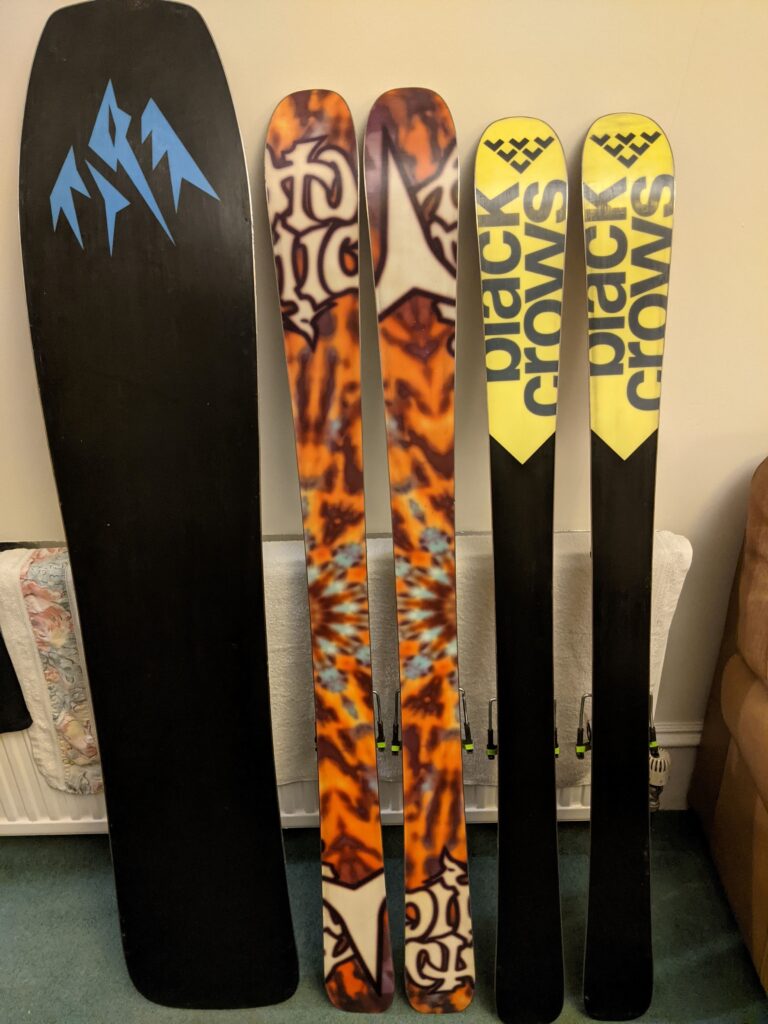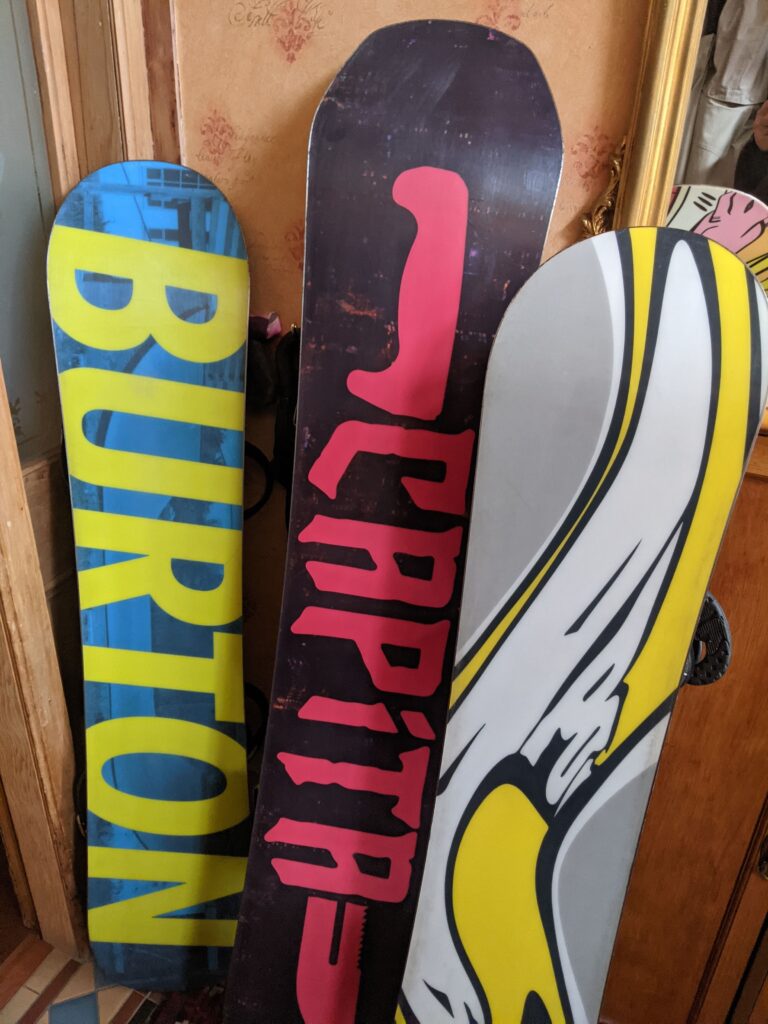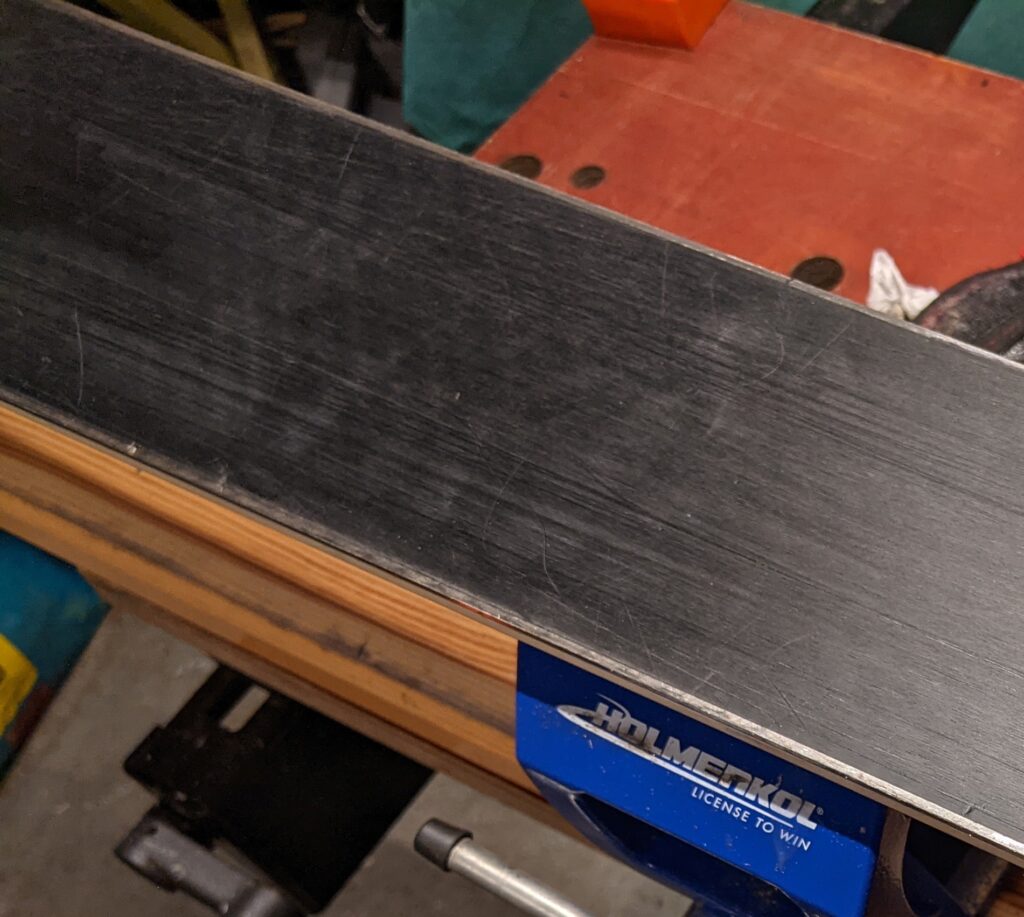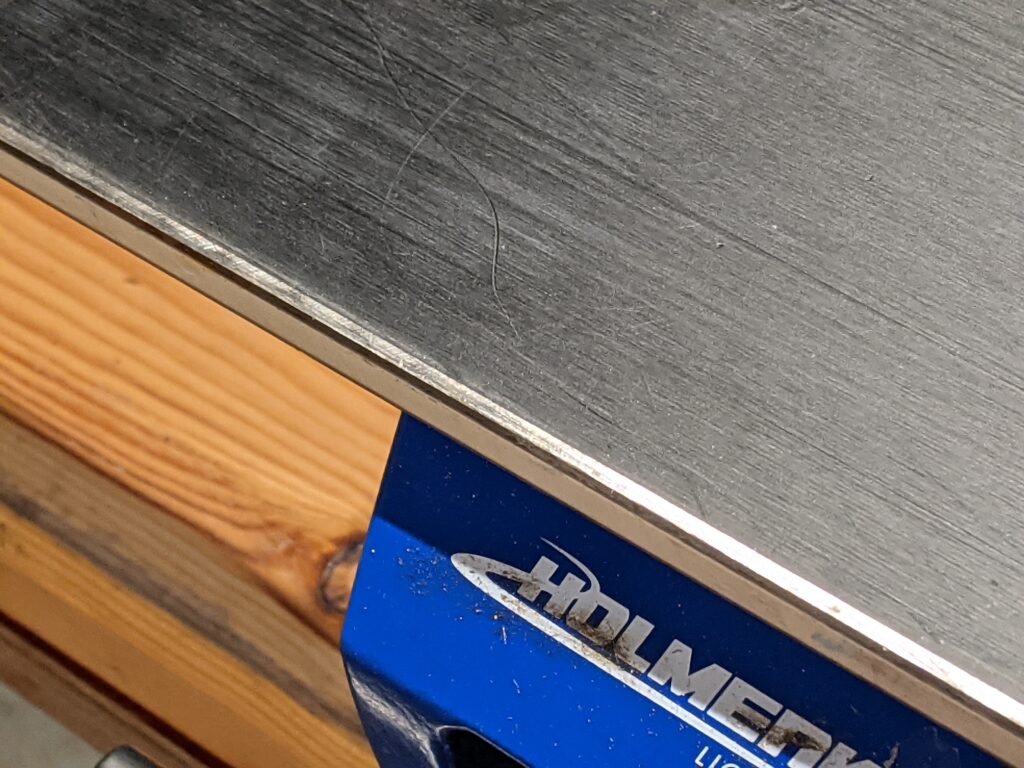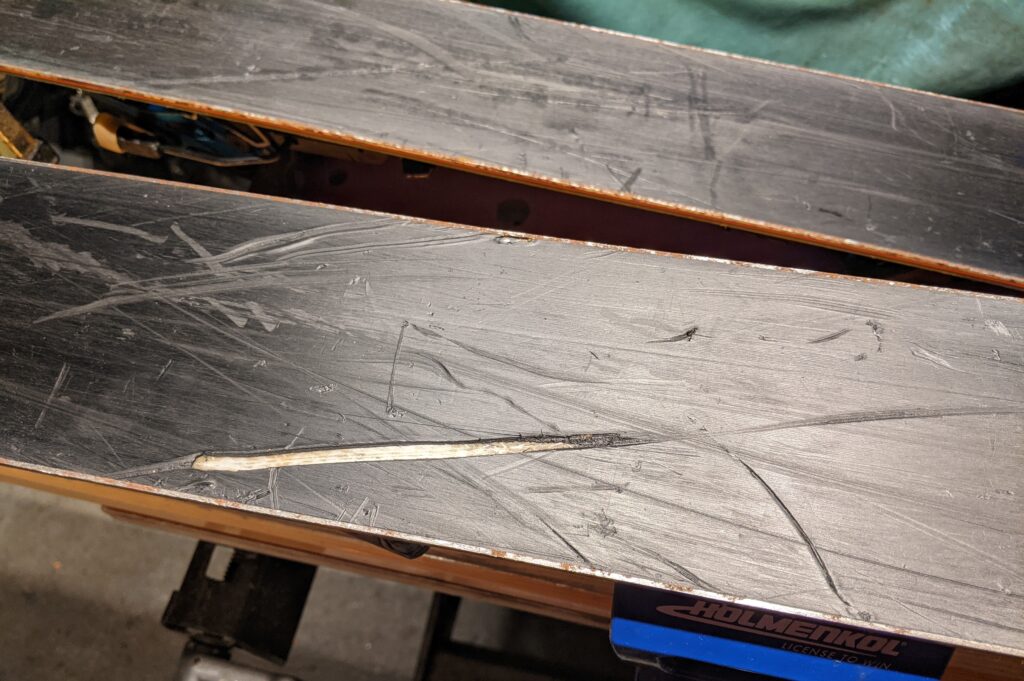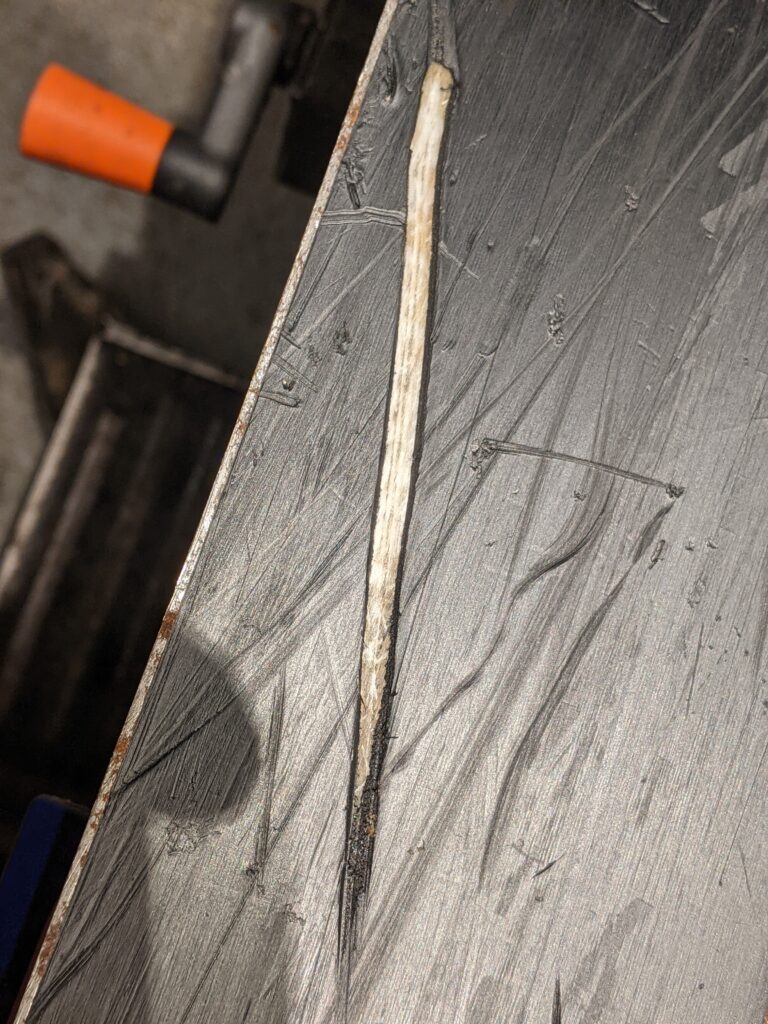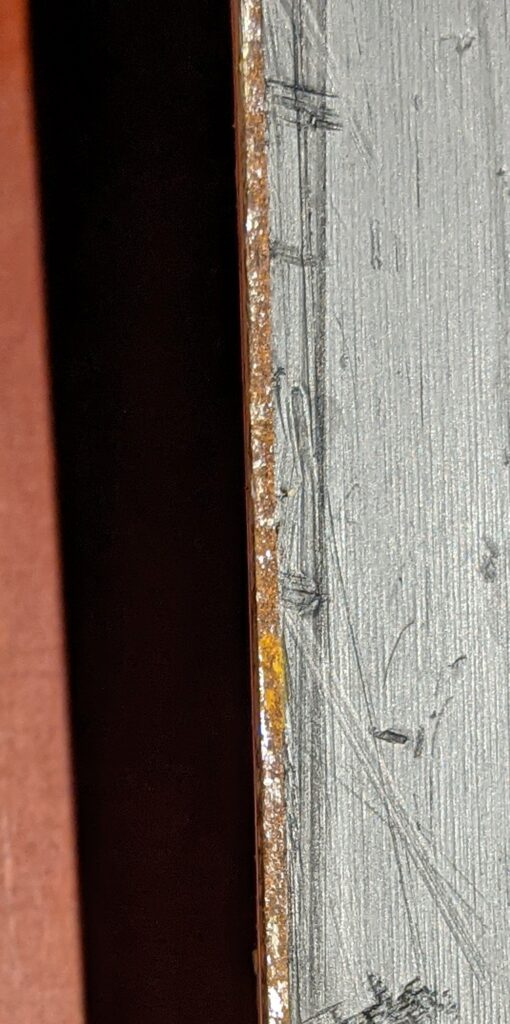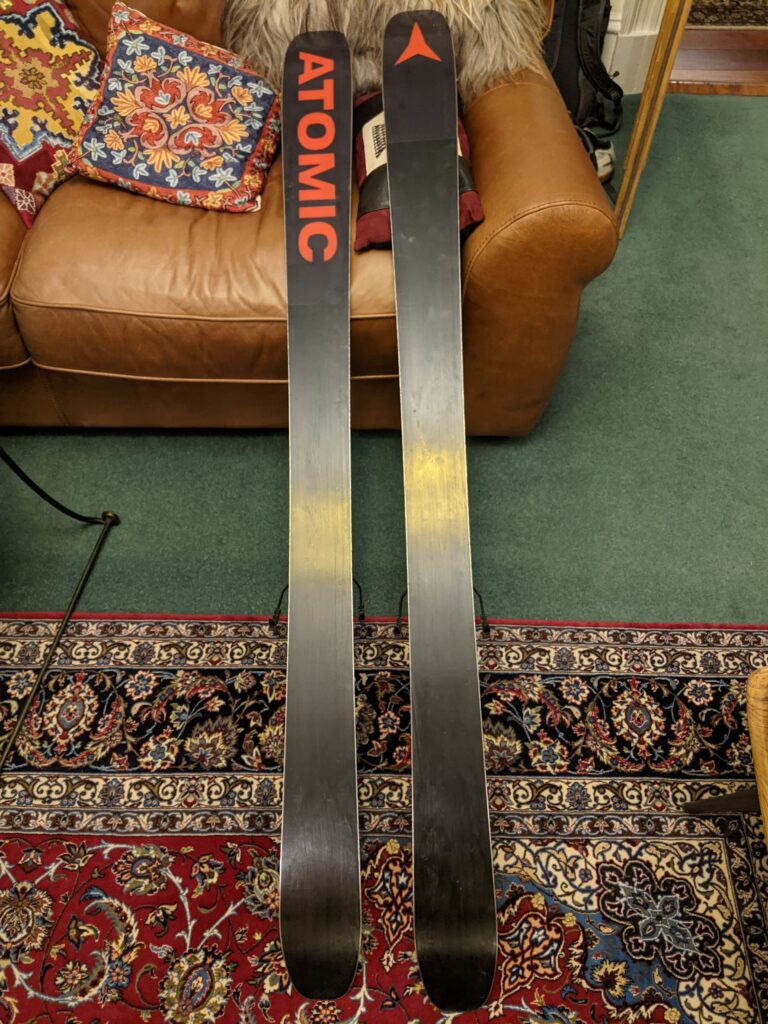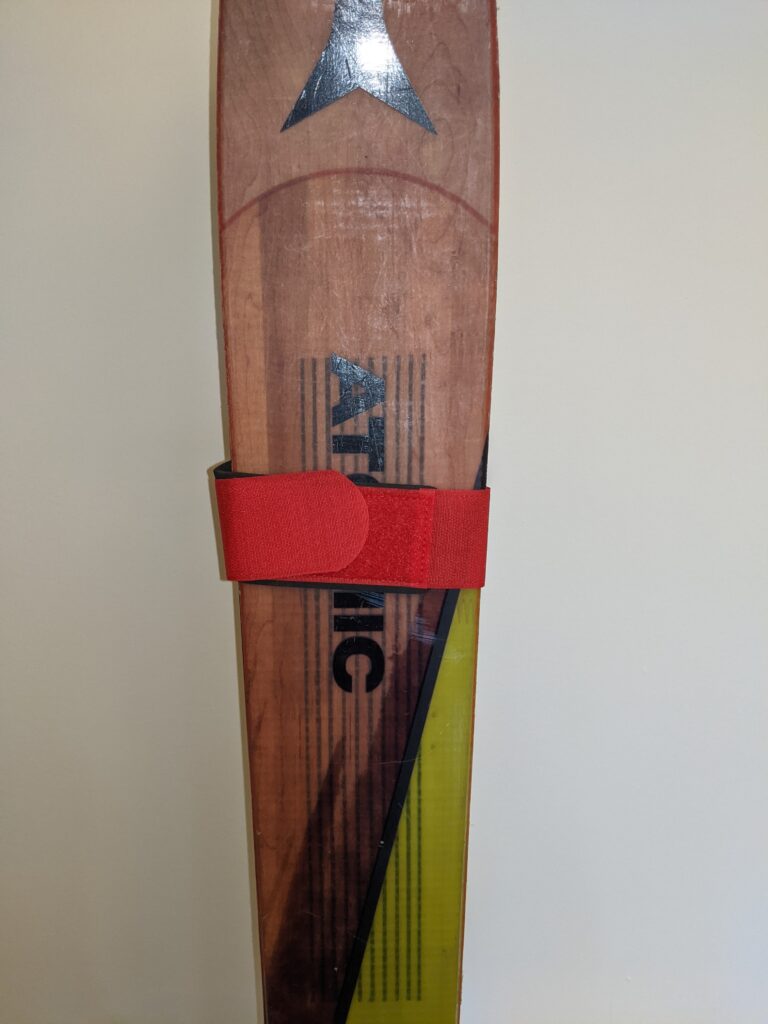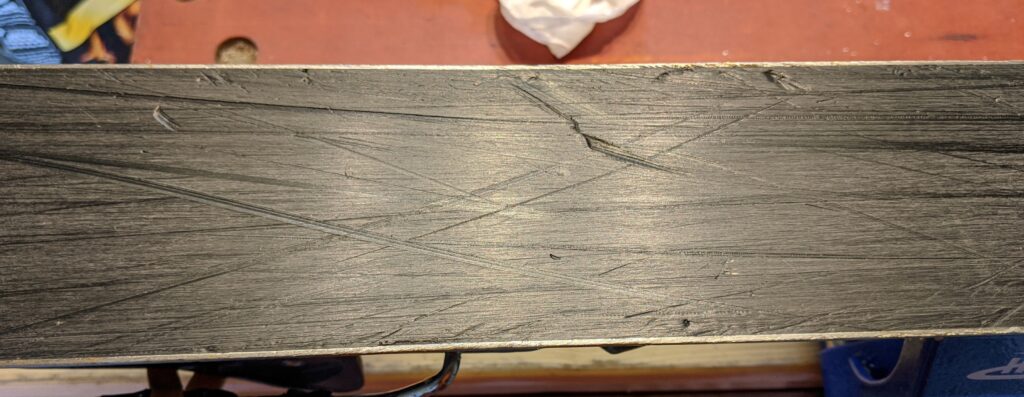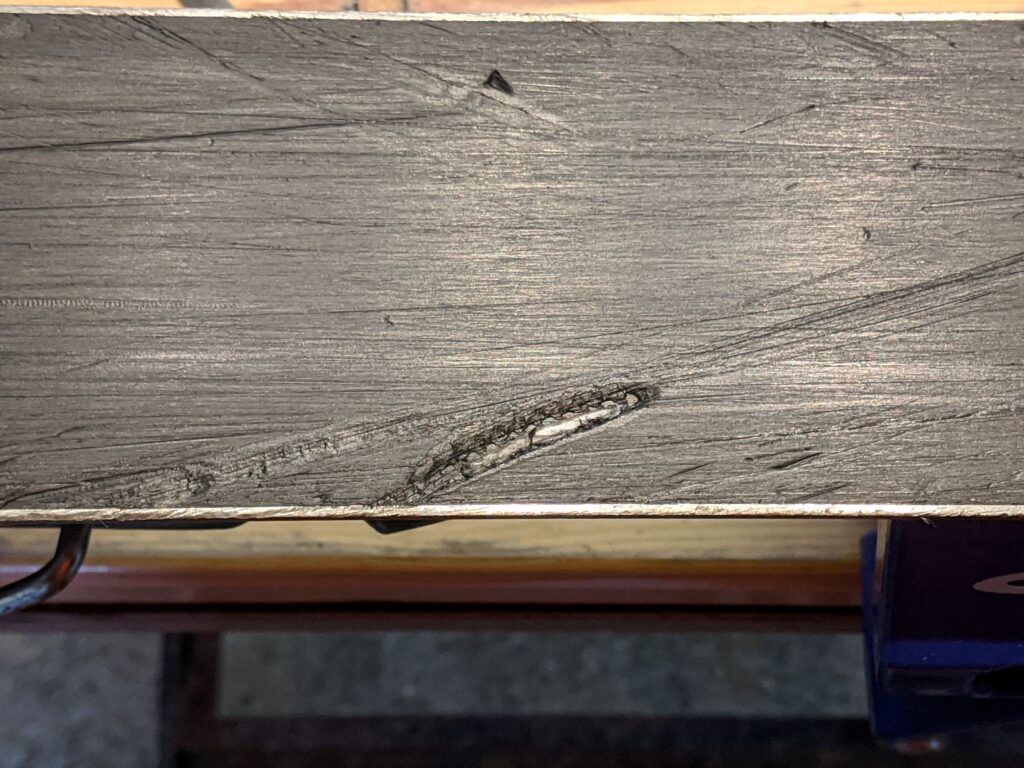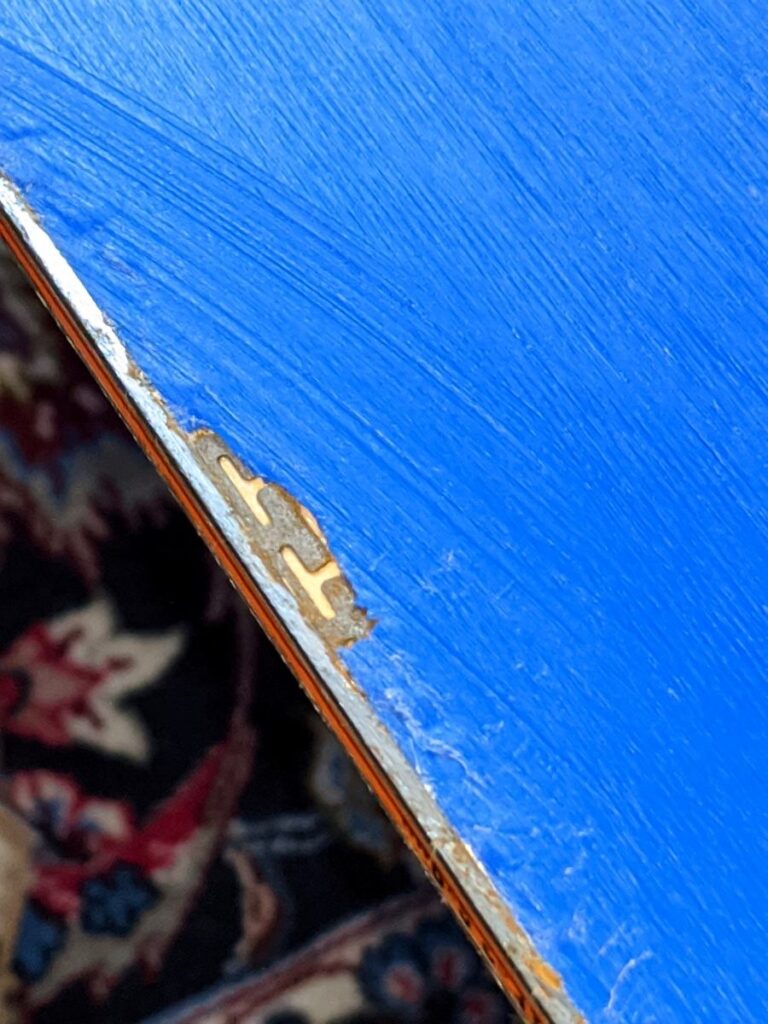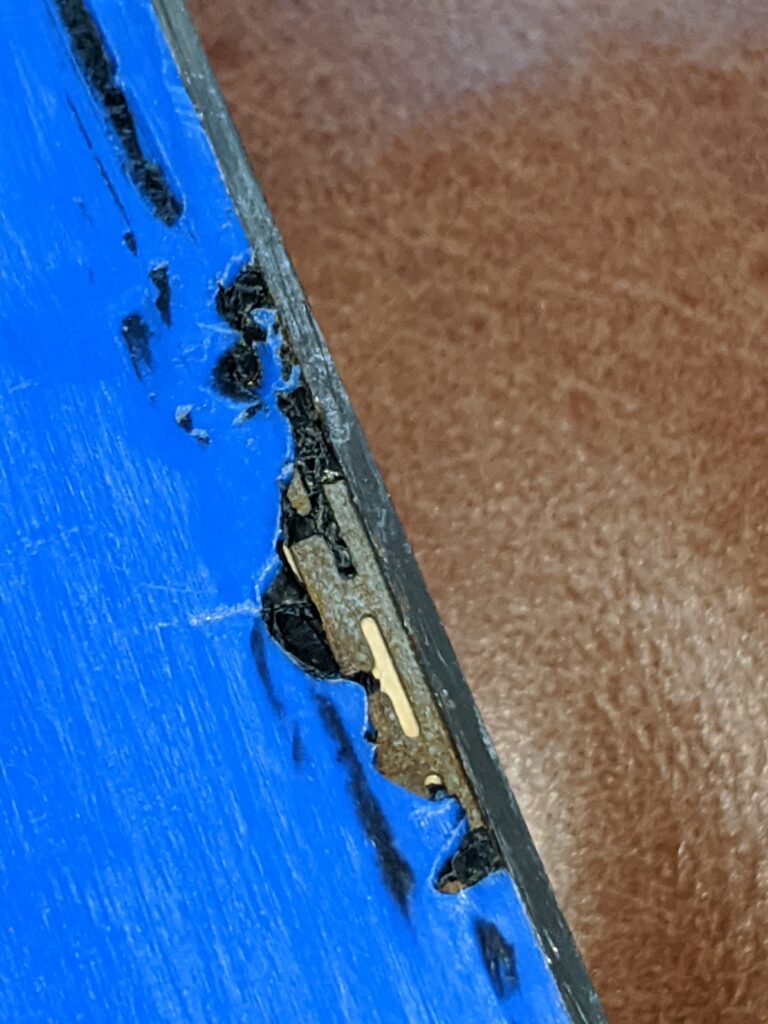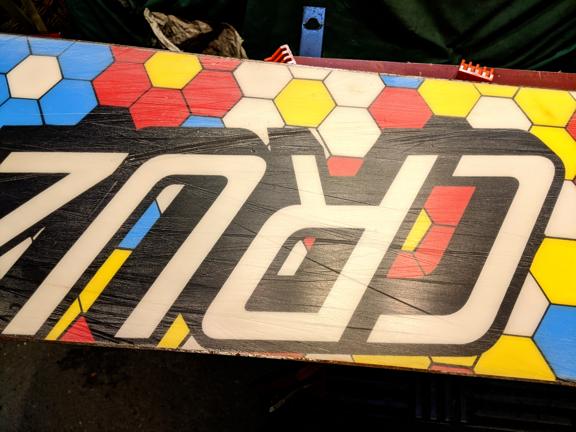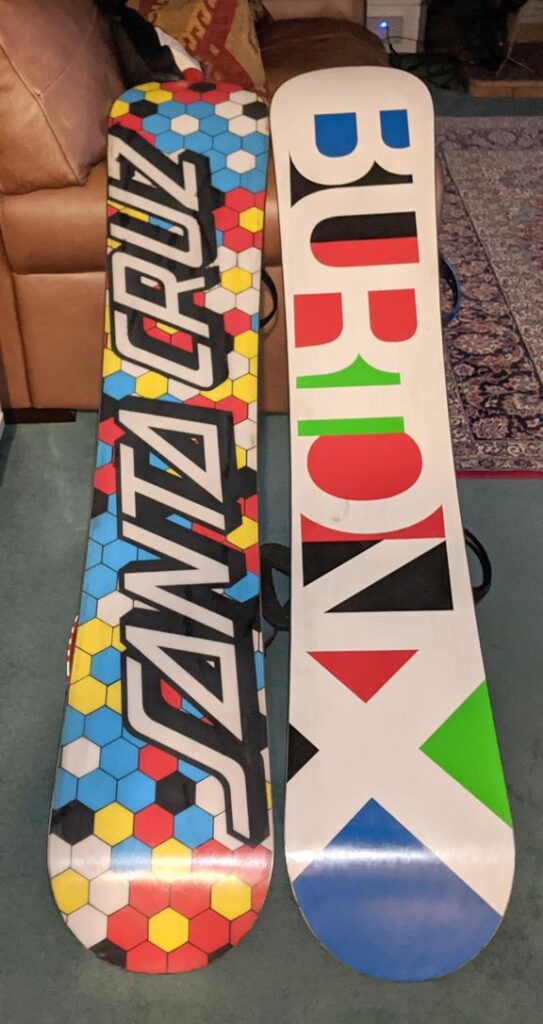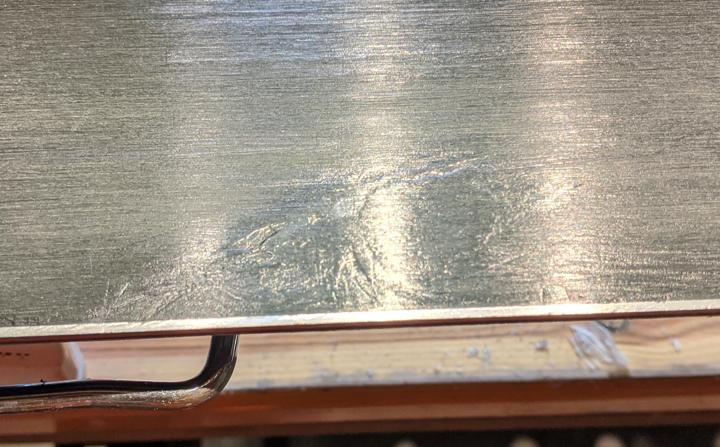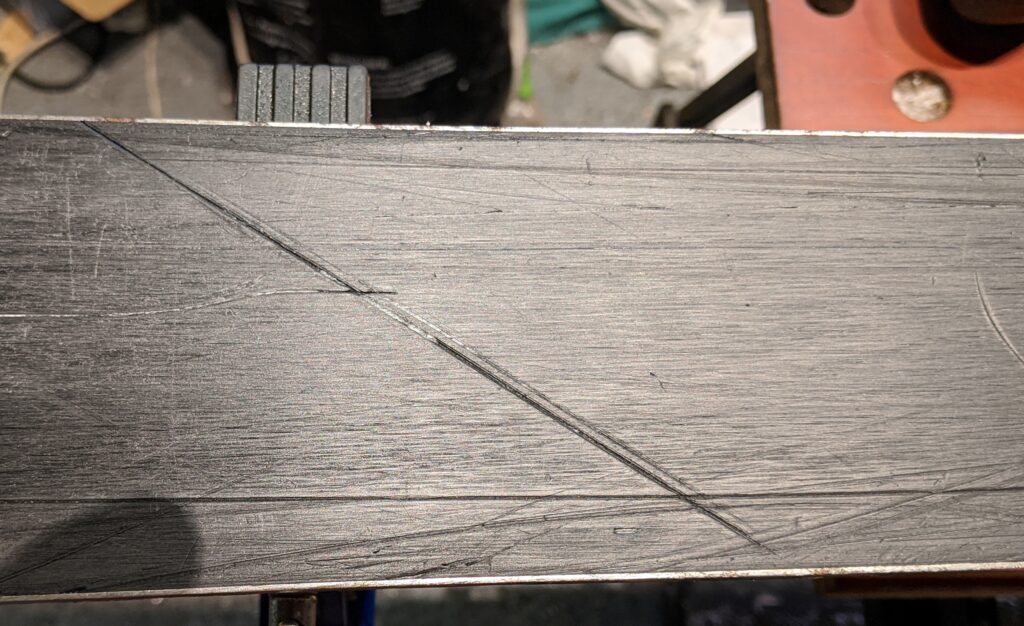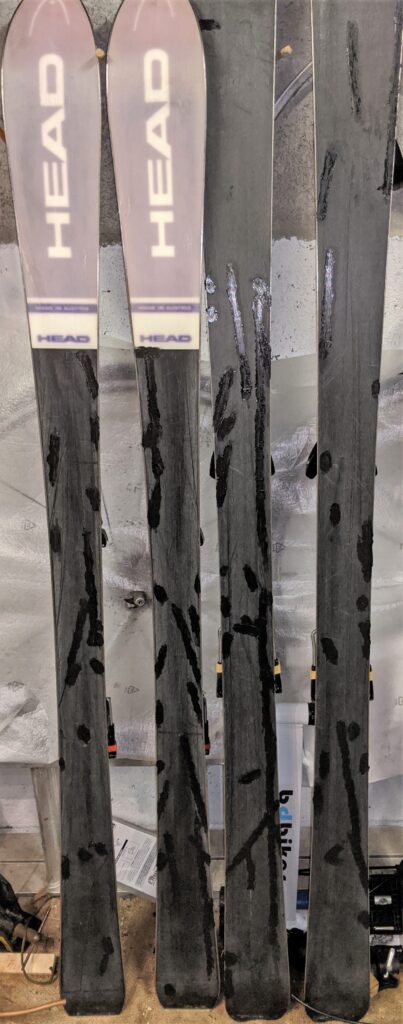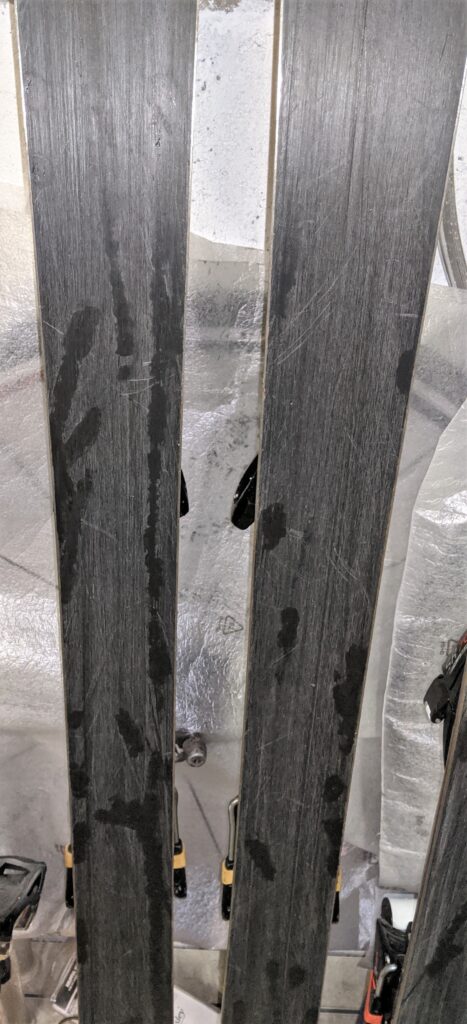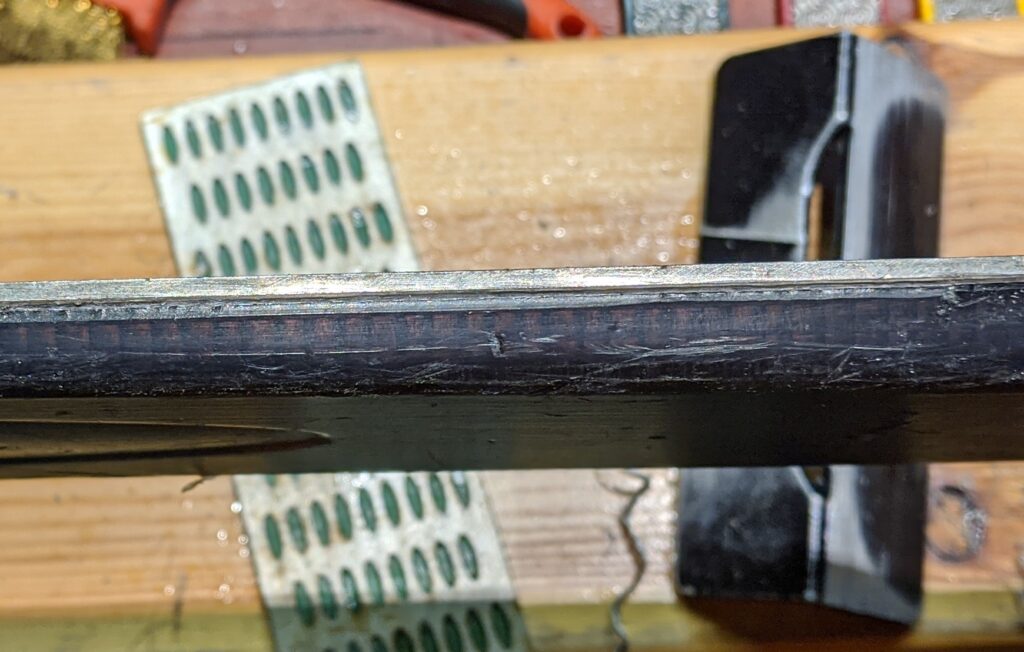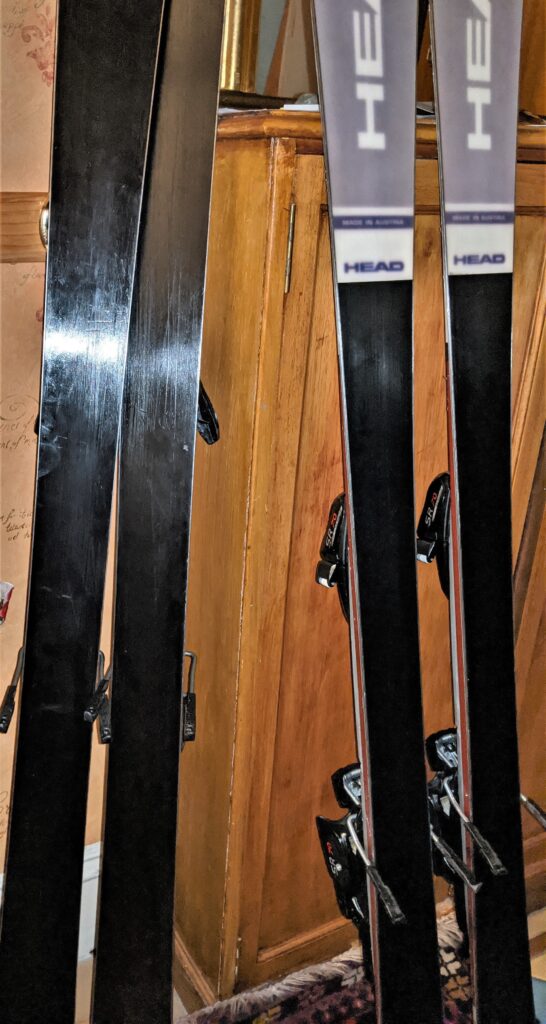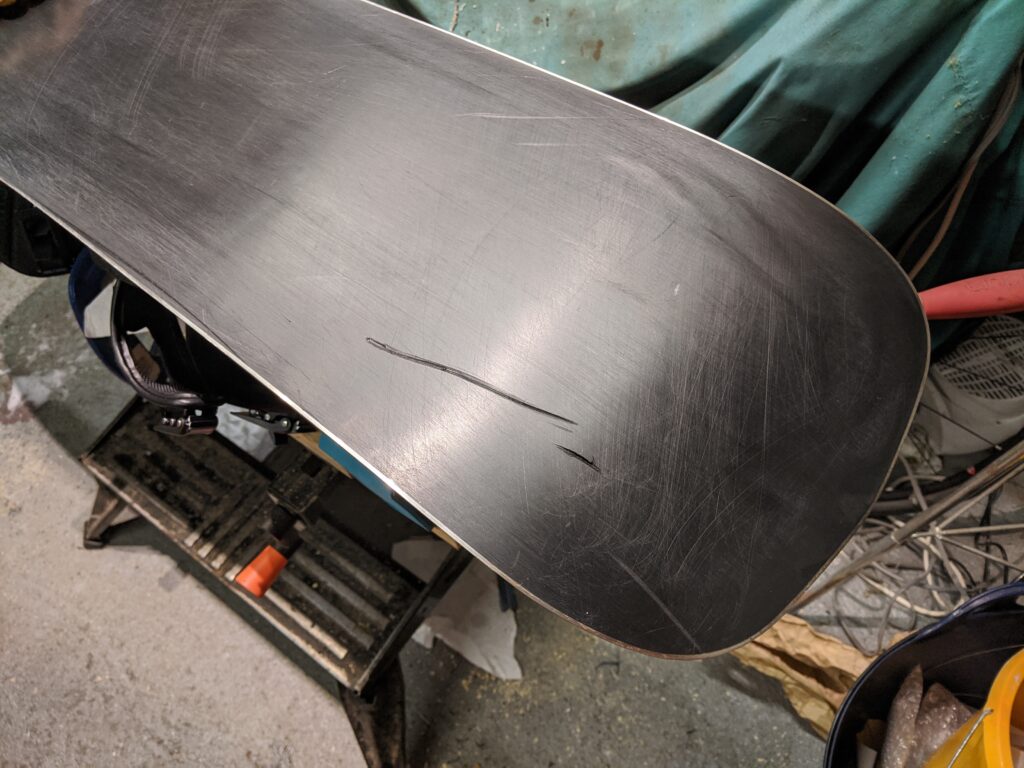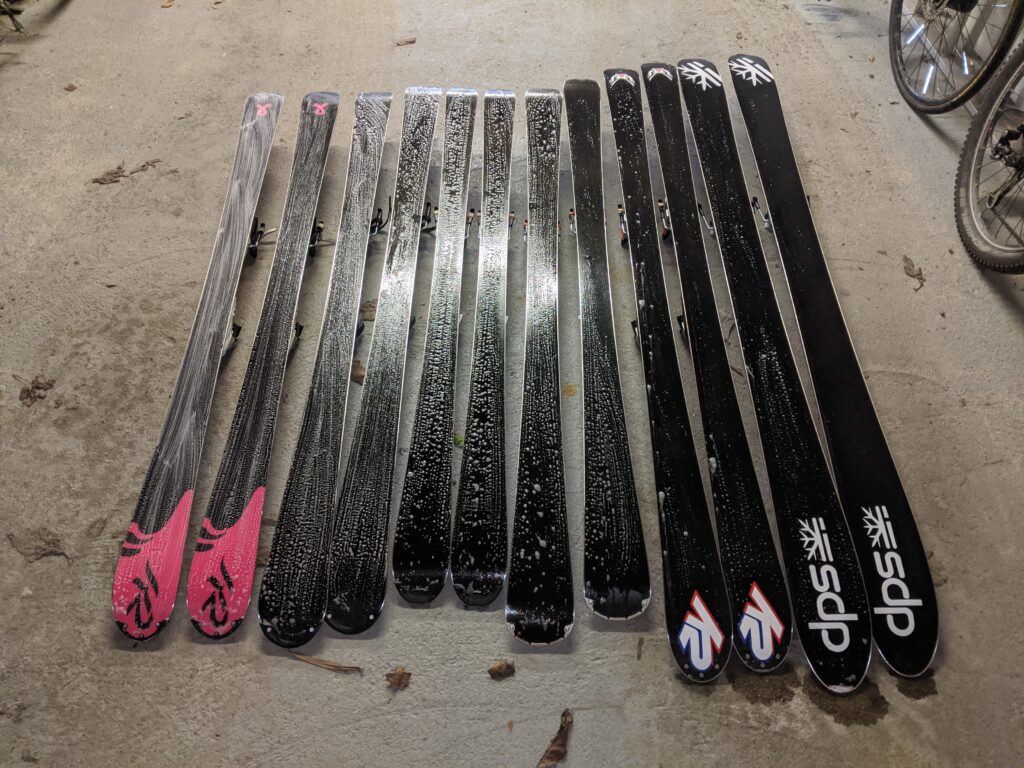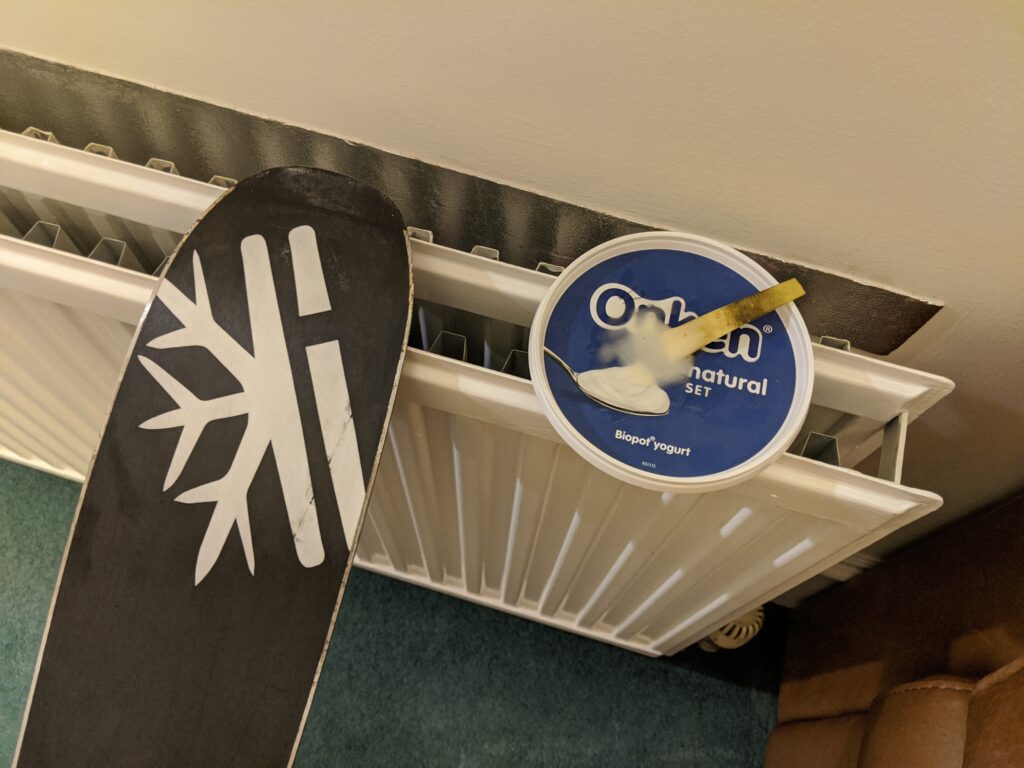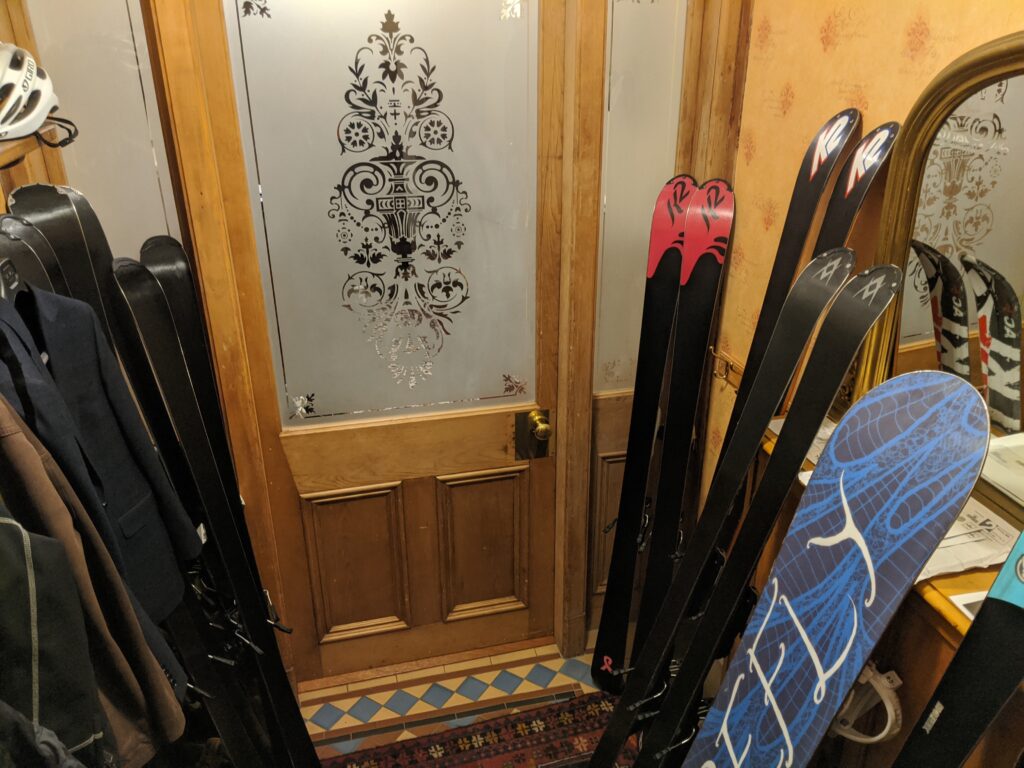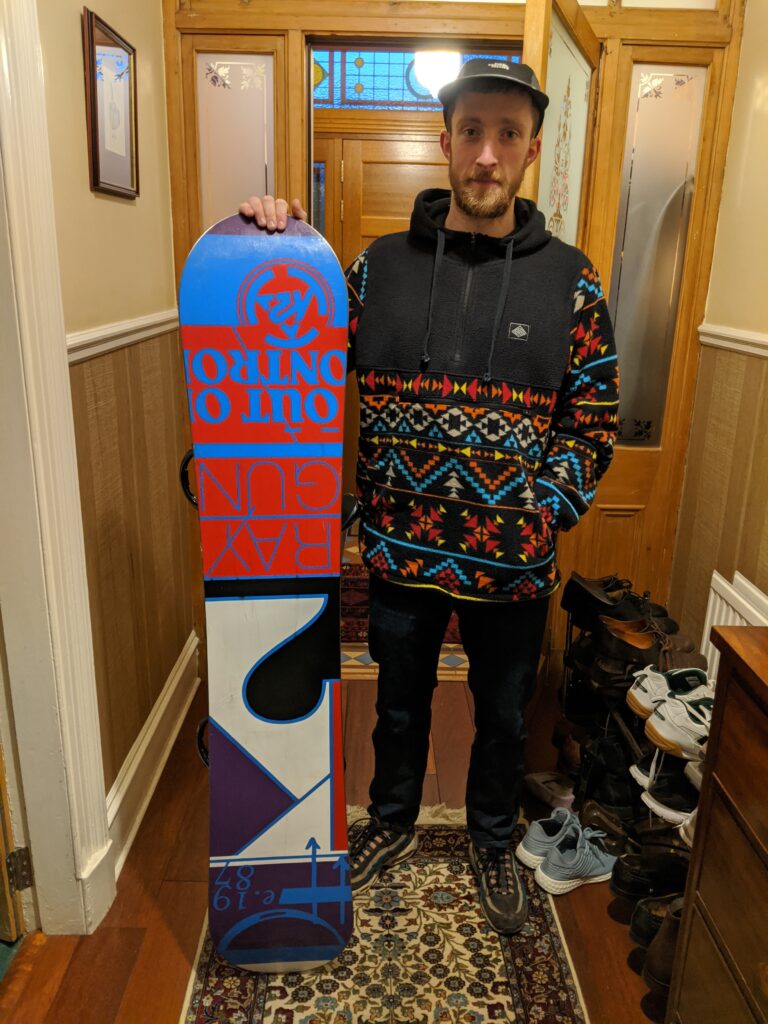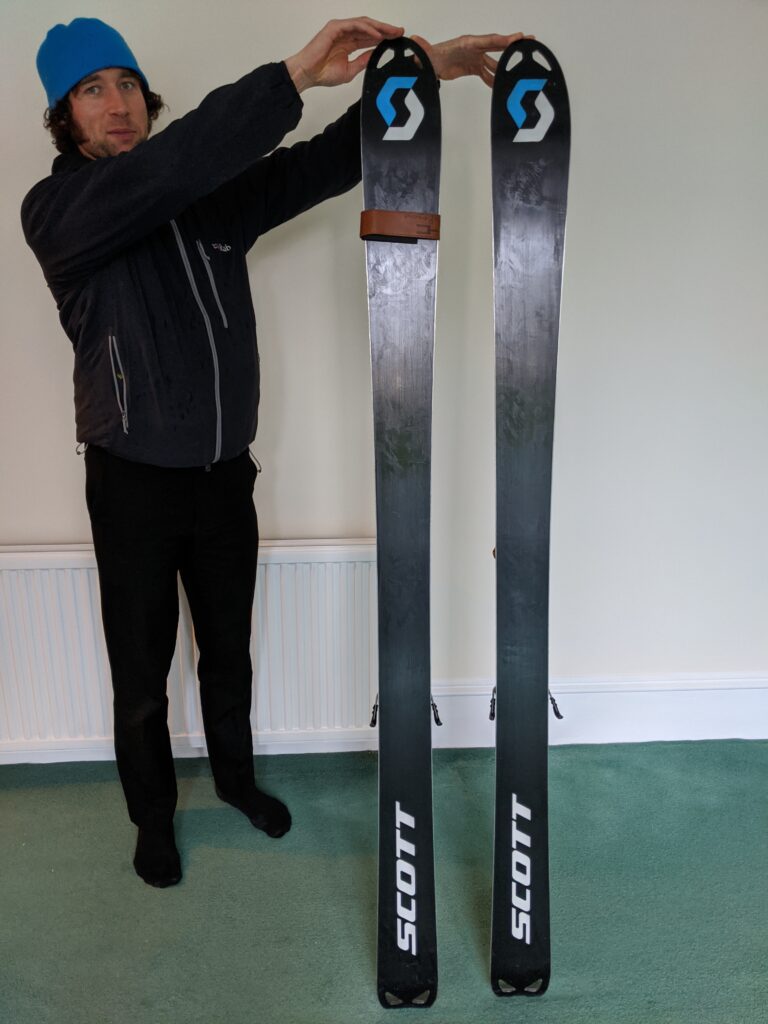In keeping wth the main trend of the 22/23 season Iain is another multi-repeat client. Normally that means a nice straightforward job just following the last edging job. However, he managed to smuggle in a new-to-him set of Atomics that had clearly had a hard life. I can only imagine that many long hours in the park, specifically on the rails, can give you edges like these:
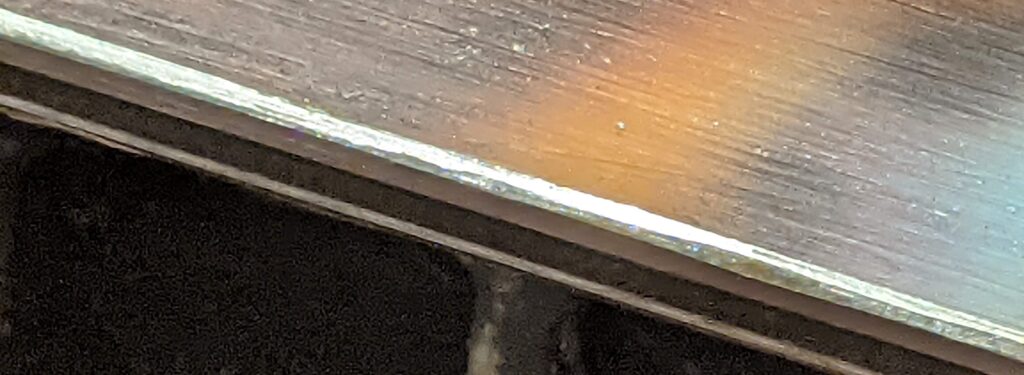
I’d handed these over to Andrii, 2022’s ski tech apprentice of the year, to complete so obviously I was in the pub when he called to ask what to do next. When I finally met the edges face to face I realised that no amount of filing could sort them properly. They did get a good seeing too, and I made £20 from selling the swarf to Pandarosa, so not all bad, but finally we had to stop. The key problem here is that you ride the rails with the edge directly under the centre of the boot (or at least you do if you want to keep off the “massive fail” section of YouTube) and of course when you finally want to turn on hard ice that is the same area you want to have a lovely sharp edge. However, Andrii pointed out that the damage is only on one side of each ski so you could run them on the correct feet for actual skiing and the wrong feet for park rail fun. Just goes to show why we should all have diversity our hiring process.
Once the Atomics were sorted it was time to sort the Bataleon DOA, which had also seen some serious use since it last graced the Cave with its presence. Regular readers will remember that Bataleon boards have longitudinal “wings” that lift up at the edges, so they think it’s OK to run the base edges with 0 degrees. Hmmmm. Once the base edges get scratched up (yes I’m looking at you Iain) it’s a bummer trying to file out the scratches as you end up filing the base as well as the metal. Last time I wrapped some masking tape around the file to give the lowest possible angle and trying the same trick again sort of worked without giving gorgeous results. Side edges are 1 degree and presented no problems other than the usual stainless thing of not wanting to take a decent edge until your files are all bald.
The Bataleon did present a good opportunity to get some base repair training in for Andrii and here are a couple of pics of him hard at it with his nice new Drager mask:
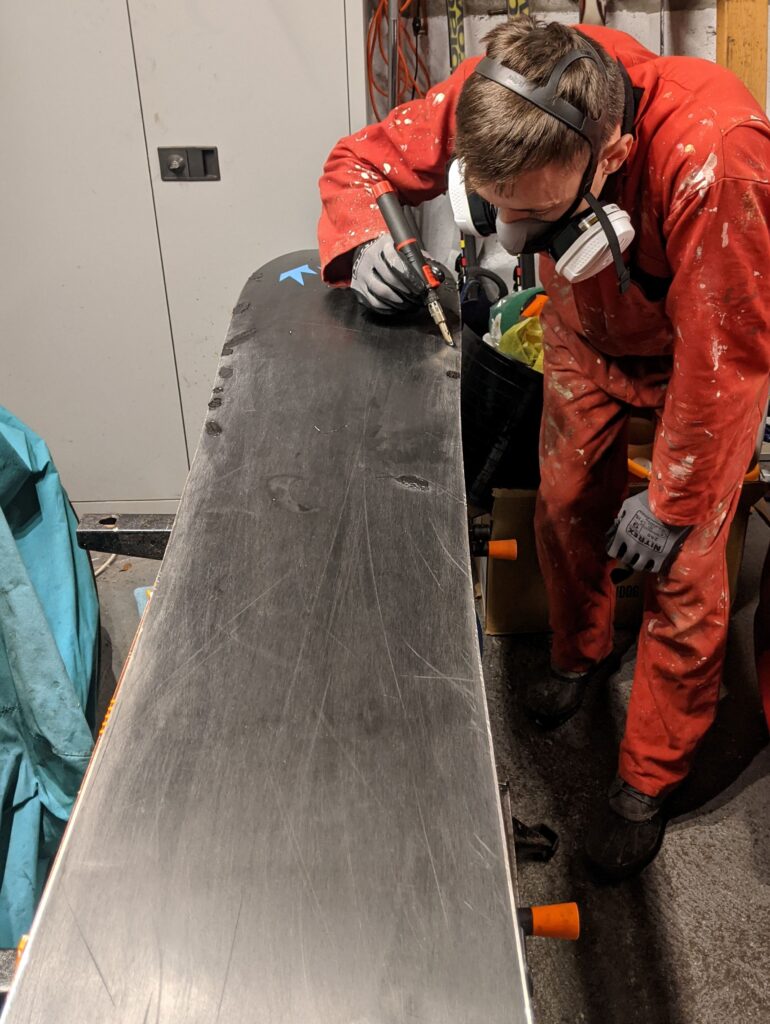
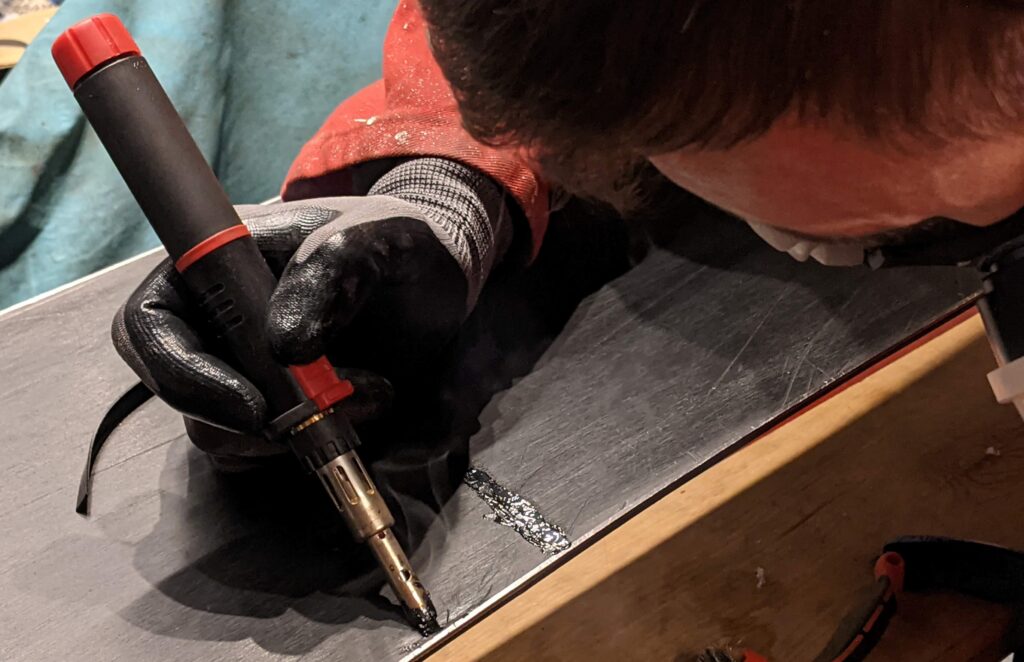
I like Andrii’s attitude – tell him what to do and he gets on with it regardless of the palls of acrid carcinogenic smoke wreathing his face. It reminds me that I need new filters for my respirator as well.
Finally the Black Crows were an absolute dream to work on – last done by me, no serious new damage: bish, bash and, frankly, bosh. Job’s a good ‘un. Still trying to explain to Andrii why all jobs aren’t quite so simple.
Here are the usual suspects lined up for the inevitable identity parade:
